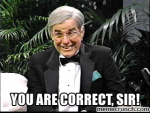I think that the rail is not dead as long as the cue ball clearly leaves it before returning.
There used to be a rule set where all sorts of perfectly reasonable shots were considered fouls. It ignored the real reason for the frozen ball rule which is to avoid an endless series of safes (on a frozen ball). One set even said that if an OB is frozen to one side pocket point and is hit to the other side pocket point, it's not a rail. That's goofy.
Straight pool has done away with the "safe only twice on a ball by the rail" rule and has gone to a stalemate rule.
On OP.org I believe it was Jerry Matchin that coined the phrase " The Nurse Rule"! Nursing the ob along the rail two times by each player then on the 3rd attempt that rail is no longer alive for the object ball. There is more to it, but that is the basics. A great rule that should apply to all games, and shame on those that in all their wisdom that have eliminated it. A great decades old American rule that we now have lost, what a shame! This would be a great rule that IMO OP.org should adopt!
But if you go to the Official Rules of OP under rule 8. Frozen Balls: then it will explain the rule when the cb is in-between the rail and ob and frozen to both. I call this rule 'Frozen Cue Ball Covered'.
Here is how I have it wrote up, and offered it up to Steve for considerations;
8.2 Frozen Cue Ball Covered; whereas the cue ball is in-between the cushion and the object ball and frozen to both. In this scenario the cushion the cue ball is frozen to is not alive for the cue ball, therefore the frozen object ball can not be played directly off of to have the cue ball first contact the same cushion that the cue ball was once frozen to. Note; all other rules for a legal shot apply. The opponent can approach the table, and if frozen, declare the shot as; 'Frozen Cue Ball Covered'.
I believe if possible a rule should have a name.
It is great to have you join the discussions, Bob! thanks, Whitey

